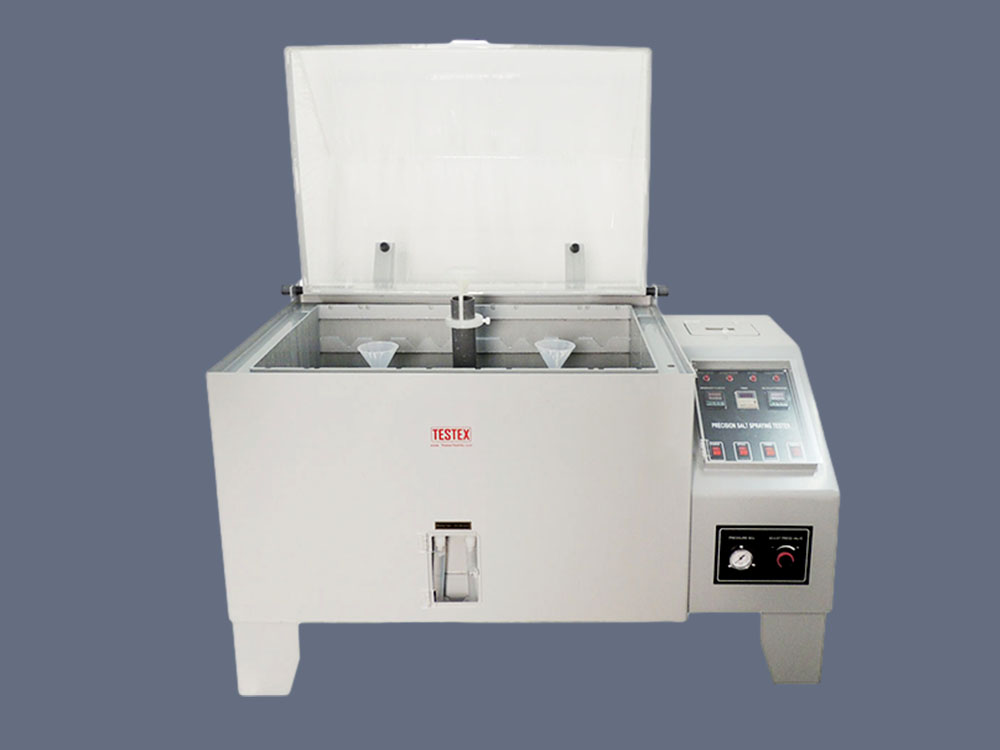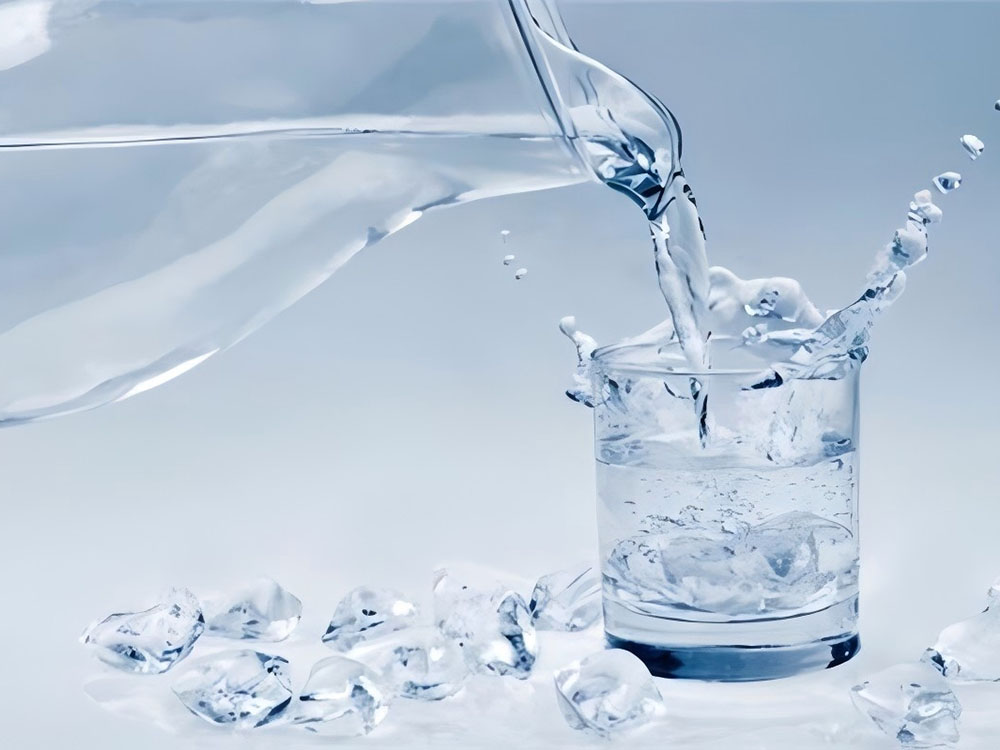The salt spray test chamber is also known as a salt spray tester. Its full name is salt water spray tester. It is mainly used to test the corrosion resistance of the sample. It is now widely used in aerospace and car electronics. And it is also used in electrical engineering, phone tech, plastics, and metals. It tests their corrosion resistance. It simulates tough natural or working conditions. This helps understand how the samples perform at high temperatures.
Now, the salt spray test chamber has been made from simple tests. These include the neutral salt spray test. They also include the copper salt accelerated acetate spray test. They also include the alternating spray test. China has also made the salt spray test a national standard. They have also created a detailed description of the test’s rules.
The working principle of the salt spray test chamber:
The working principle of the salt spray test chamber is simple. It sprays a corrosive solution onto a sample. The spray wraps the sample’s surfaces. This test can be continuous or cyclic. It continues until the sample corrodes. The time until corrosion is the sample’s corrosion resistance. Longer time means better resistance.
The solution in the salt spray test chamber is 5% sodium chloride. It mainly causes corrosion. Or, it is a sodium chloride solution to which 0.26 grams of copper chloride is added. This is the salt spray corrosion solution. Also, the salt spray test chamber can control the salt spray amount and spray volume. This ensures the test temperature is constant. It is easy to operate and stable. So, people often use it to test if daily items or products resist corrosion.
The test chamber can reach any temperature from room temperature to 50℃. It can keep the temperature constant in the test workspace. We conduct salt spray corrosion tests on materials at constant temperature and humidity. The tests are within the specified volume of the chamber. Manufacturers make the equipment from imported PVC plastic sheet. It resists corrosion and does not react with salt or acidic solutions. It does not affect the test results.
This equipment can operate both inside and outside the pressure balance. The engineers designed this equipment to operate inside and outside the pressure balance. It can handle salt spray in the box free settlement. One can adjust it to meet the range of national standards.
The steps of salt spray test
1. Blend 5% salt water test solution. Use a measuring cup to take 13.3 litres of pure water. Add 700g of industrial salt, sodium chloride (NaCl), to the water. Then, stir well.
2. Use a measuring cup to add the prepared brine test solution in batches into the inlet of the test. This makes the brine test solution flow into the brine preheating tank.
3. Place the sample that needs testing on the shelf. Before the test, the test sample’s surface must be clean. No oil or temporary protective layer is allowed.
4. Turn on the power switch of the salt spray tester. Set the test chamber’s temperature to 35℃, the pressure drum’s temperature to 45℃, and the test time to 12 hours. Turn on the instant spray switch and timed spray switch. Start spraying. The salt spray test starts. After 12 hours, the tester will turn off by itself. The test is over. If the customer supply contract has special requirements on the test time, it will be executed according to the contract.
5. After the test, use water to wash off the salt on the specimen. Then rinse it in distilled water. The washing water should be no more than 35 ℃. Finally, put the specimen indoors for 2 hours. We have recovered the metal test samples for the salt spray test. Good samples have no corrosion, blistering, cracks, or rust. Bad ones have the opposite.
6. The test results show if the item passed. Fill in the salt spray test report. Say if it passed or not. Send the report for the boss to review and approve. An unqualified IQC responsible person should contact the supplier. They will analyze the countermeasures to confirm the treatment to improve.
7. Replace the saline test solution every month. Also, replace the water in the heating tank. And clean the salt spray test chamber.
What are the requirements for the environment? They matter when installing the salt spray test chamber
A salt spray test chamber assesses how well a product resists salt spray. It tests corrosion resistance. This test is important. The test results must be scientific and reasonable. Many reasons affect the stability and consistency of the salt spray test results. To make the test results better, we must improve the test technology. The salt spray test chamber is mainly used for treating material surfaces. This includes paint, electroplating, inorganic coatings, anodic treatment, and anti-corrosion rust oil. It tests the corrosion resistance of products. You cannot just casually place the test chamber anywhere. Salt spray test chamber for the installation of the place is strict. When installing the salt spray test chamber, these are the requirements for the environment:
1、There must be more than 600mm space around the equipment.
2、The temperature around the equipment should be kept between 15℃~30℃.
3、Equipment without direct sunlight or other heat sources of direct radiation.
4、Equipment turns without strong airflow. We must force the surrounding air to flow. But, the airflow should not blow directly into the box.
5、No high concentration of dust and corrosive substances around the equipment.
6、Equipment using power supply voltage fluctuations ≤ ± 10%.
The salt spray test chamber test water requirements and conditions
To make the salt spray test chamber more efficient, before the test users should prepare. For example, the salt spray test has water quality requirements. Your task is to summarize them and the relevant water conditions.
First of all, the salt spray chamber needs to add water to the four sides of the box, respectively:
1. Fill the bottom of the studio water tank with distilled or deionized water. This stops the box body from drying when heating.
2. Add the top part of the box around the water tank to the right amount of distilled or deionised water. Don’t fill it too much or too little. This way, the water and salt spray won’t overflow when you close the box.
3. The salt spray box has a stainless steel drum to add distilled or deionised water. First, open the bleeder valve and saturator water valve. When adding water, the water level in the glass box should be at 4/5. After adding the needed water, close the bleeder valve and saturator water valve. Water evaporates and people consume it. Add water when the level drops to 2/5. This will keep the heating tube from burning due to lack of water. The heating tube burning caused the lack of water. This affected the baked saturator and internal heating point.
4. You will add pure and deionized water to the tank. You will also check if the tank and indoor sprayer are well connected to the pipe. Then, you will add a salt solution with 5% concentration to the tank.
The installation requirements of the salt spray tank water supply system:
1. The water quality requirements are as follows. You can use industrial water or tap water with a filter. For filtered water, the pH must be between 6.5 and 7.2. Alternatively, you can use pure water. But, you cannot use mineral water, which contains minerals.
2. The requirements are for water pressure to be 1 to 3 kg. This level ensures normal water replenishment.
3.The interface has two requirements. A hose needs to connect the equipment at the mouth of the water replenishment. The hose needs to use the sealing ring to prevent leaks.
For more environmental test chamber, Please visit: https://chiuventionclimatechamber.com
For more environmental test simulation programmes,environmental testing knowledge, instrument knowledge, and environmental testing laboratory knowledge, please contact us: [email protected]


